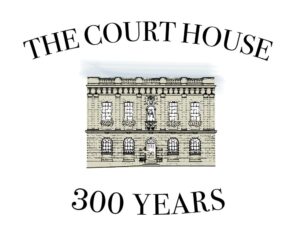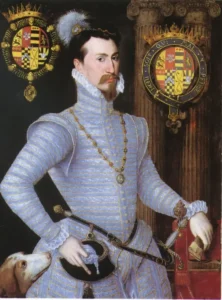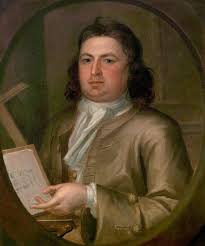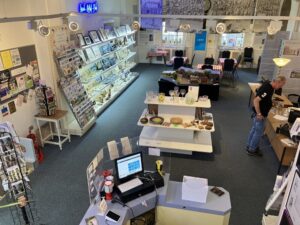A Brief History of the Court House
 The Old Court House, Warwick’s Town Hall, is celebrating its tercentenary. Work began on the construction of this building in 1725. It is a Grade-1 listed building, meaning it is of ‘exceptional interest’. Inside you will find a warm welcome in the Visitor Information Centre, and plenty of information about this building’s place in the history of the county town of Warwick.
The Old Court House, Warwick’s Town Hall, is celebrating its tercentenary. Work began on the construction of this building in 1725. It is a Grade-1 listed building, meaning it is of ‘exceptional interest’. Inside you will find a warm welcome in the Visitor Information Centre, and plenty of information about this building’s place in the history of the county town of Warwick.
The Administration of Warwick over the Centuries
In 1545 King Henry VIII granted Warwick a charter establishing a Corporation administered from the Guildhall at the Westgate. Nine years later, Henry’s daughter Queen Mary granted Warwick a second charter permitting a magistrates’ court, and strengthening the powers of the corporation. The Mayor rather than the Earl in the castle became the ‘Lord’ of the Court Leet that kept discipline in the town and supervised food standards.
On this site at the central crossroads, there were some shops and an inn called ‘The Cross Tavern’. It stood next to a large High Cross in the centre of the junction. The site belonged to the Earl of Warwick, Ambrose Dudley.

His younger brother, Robert Dudley, Earl of Leycester, wanted the Guildhall as a retirement home for his army officers, and when he claimed he had been insulted by a poorly-organised welcome when he was visiting Warwick, the burgesses had to appease the angry Earl and give him their Guildhall to become The Lord Leycester Hospital. In return, Ambrose gave them several other buildings, including the Cross Tavern to be used as the Mayor’s Parlour and the magistrate’s court or ‘petty sessions’. So there have been court hearings on this site for about 400 years.
The Great Fire
On a windy day in September 1694, fire broke out at the top of the High Street, and in just six hours had consumed 153 buildings, including the nave and tower of St. Mary’s Church. But the flames had not crossed on to this side of Castle Street, so the Cross Tavern survived, though it was ‘scorched’ and surrounded by rubble.
After a national appeal for funds, the rebuilding of Warwick began the following year, with strict rules. There would be no more timber or thatch, the streets would be wider, and houses would be two stories, with dormer windows and a basement, for a clean and elegant appearance for the town.
The Building of the Court House
Despite the Corporation being in debt, the burgesses decided to demolish the Cross Tavern and build a new Court House that would be even grander than the fine houses that had risen from the ashes on the other corners of the central crossroads.

They commissioned local master-builder Francis Smith to design and build their new headquarters. Work began in 1725. But the cost of the new Court House in effect bankrupted the Corporation; it could not honour its debts. The building was ‘sequestered’ by the Chancery Division of the High Court in London, and the burgesses had to hold their meetings elsewhere.
The building was leased to Mr Edward Mann, who promoted grand assemblies, and the Court House became the centre of Warwick society. In 1761, local gentry paid off the Corporation’s remaining debts and the Court House building could be used again for the administration of the town, civic meetings and all kinds of public and private events. During the two world wars it was used by the War Office to administer the call-up of troops, payments to dependents, air-raid precautions, placing of refugees and evacuees, and rationing.
Refurbishment
Finding funds for repairs over the 300 years has always been an issue. In 2010, the building was once again badly in need of repair. But with the help of a grant from the Heritage Lottery Fund, a major refurbishment was able to take place, with the installation of a lift, a new Visitor Centre and council offices, redecorated ballroom and council chamber, and a redesigned Warwickshire Yeomanry Museum in the basement.
 It reopened in 2014, eleven hundred years after the Anglo-Saxon ‘Lady of the Mercians’, Aethelflaed, had built a fort here by the river, in effect founding Warwick.
It reopened in 2014, eleven hundred years after the Anglo-Saxon ‘Lady of the Mercians’, Aethelflaed, had built a fort here by the river, in effect founding Warwick.
Today, the Court House is a thriving centre of community activity with teas and talks in the ballroom, musical performances, keep-fit classes, coffee mornings, craft fairs, wedding receptions and business meetings, as well as serving as the headquarters of the ancient Court Leet, and the home of Warwick Town Council. Discover more inside.
